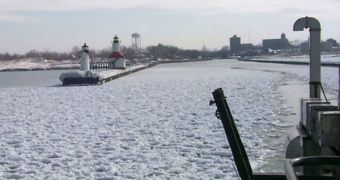A team of experts is announcing that authorities in the United States now have extended abilities of modeling the weather and marine forecast for the Great Lakes area. This can now be done in more detail than ever before, and also for longer periods of time.
Whereas experts were only able to cover 36 hours in advance at first, they can now cover up to 60. This allows a host of lake users to be warned in time of any impending storm or similar disruption.
Some of the categories that might benefit from this include commercial and recreational mariners, the shipping industry, emergency responders, water resource managers and the private weather industry.
The enhanced weather and marine forecast models were developed by experts at the US National Oceanic and Atmospheric Administration (NOAA).
At the same time, officials announce, the simulations that underlie the agency's predictive abilities have been moved to the powerful and reliable supercomputers of NOAA's National Weather Service (NWS).
The model itself is called the Great Lakes Operational Forecast System, and is operated by the National Ocean Service at NOAA. It predicts how currents, water levels and water temperatures will interact in the Great Lakes at any time.
One of the reasons why NOAA will now find it easier to model the climate around the lakes in more detail is the fact that the supercomputers running the simulations are more reliable than the grid the agency had access to before.
“We are expanding environmental modeling capabilities within NOAA by leveraging existing resources and partnerships,” explains the director of the National Centers for Environmental Prediction, Dr. Louis Uccellini.
“This initiative will give NOAA customers better, more reliable and timely information,” adds the expert, who runs a division of the National Weather Service.
“This initiative will lead to great advances in environmental modeling within NOAA,” explains NOAA NOS acting assistant administrator David Kennedy.
“Imagine a system one day that can help us provide more accurate and timely predictions for safer and more efficient marine commerce and also lead to improvements in ecological forecasting, such as the harmful algal bloom prediction,” he adds.
The new models will aid NOAA in managing the US marine ecosystems, and also in supporting the federal, regional, and private-sector partnership called Integrated Ocean Observing System (IOOS).
Its goal is to increase understanding of the oceans, coasts, and Great Lakes so that decision-makers can take action to improve safety, enhance the economic relevancy of the area, protect the environment, and conserve endangered species.

 14 DAY TRIAL //
14 DAY TRIAL //